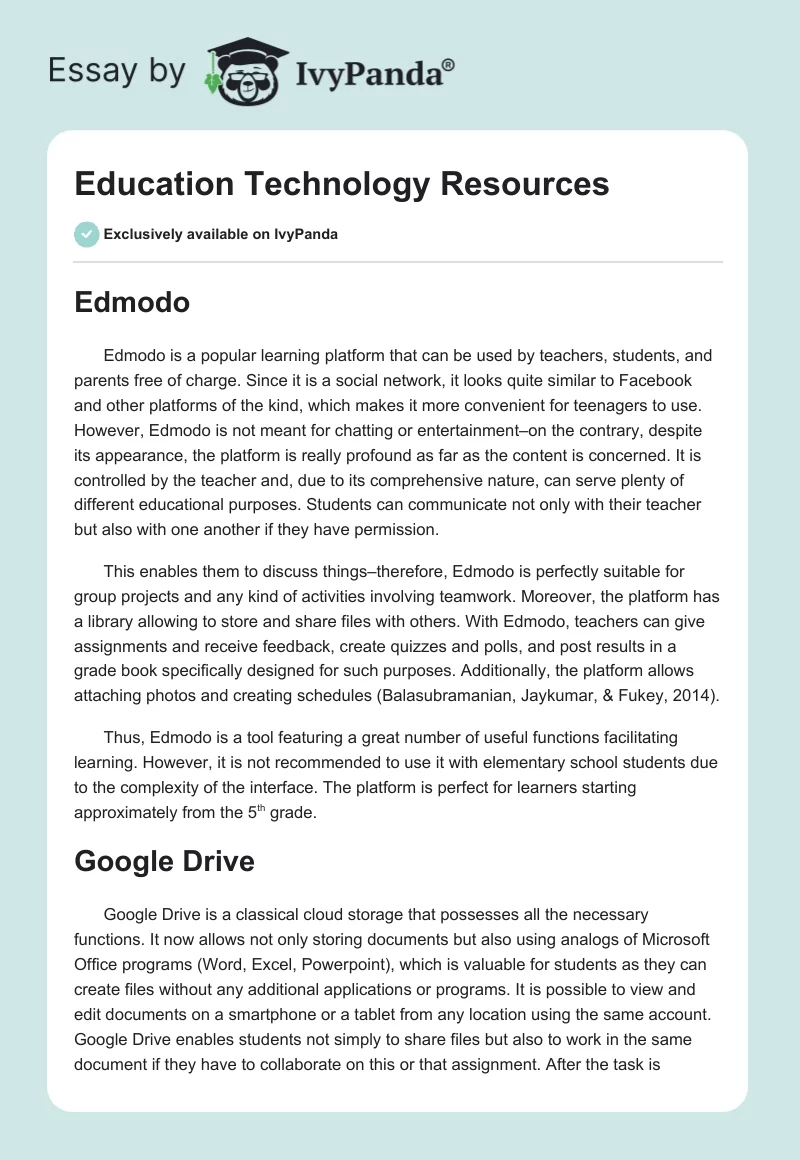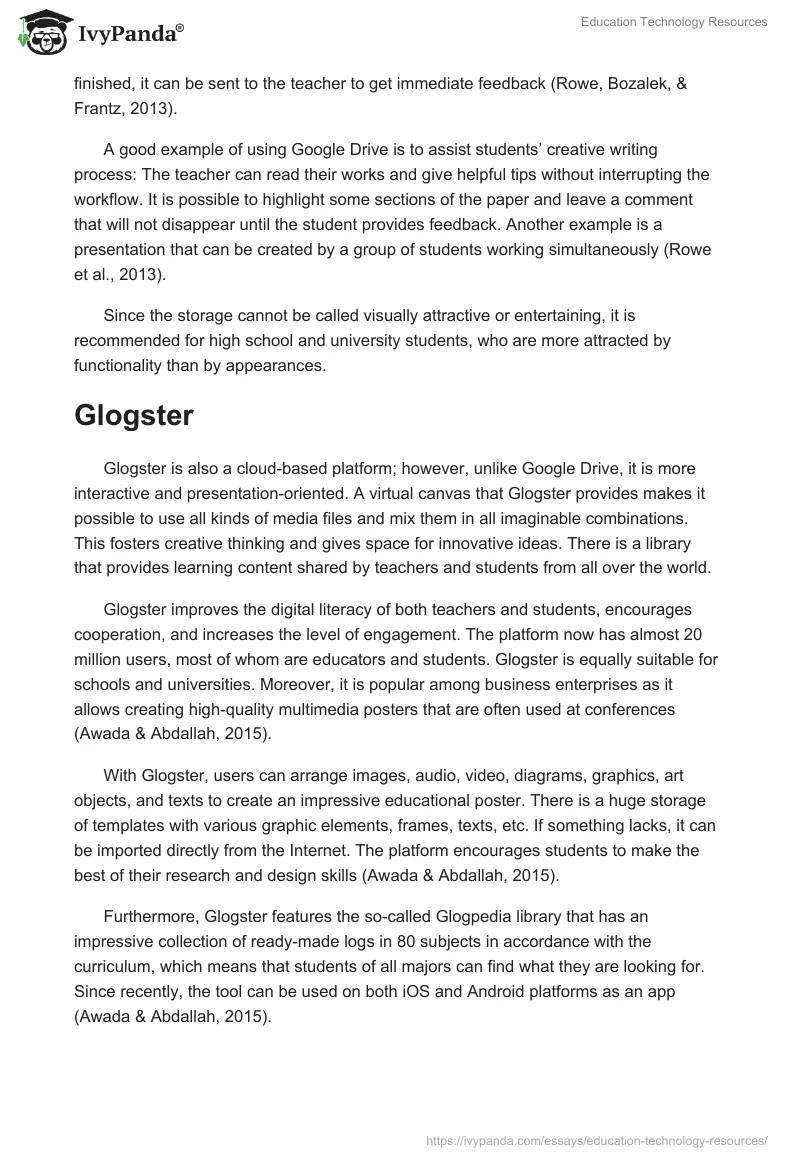Edmodo
Edmodo is a popular learning platform that can be used by teachers, students, and parents free of charge. Since it is a social network, it looks quite similar to Facebook and other platforms of the kind, which makes it more convenient for teenagers to use. However, Edmodo is not meant for chatting or entertainment–on the contrary, despite its appearance, the platform is really profound as far as the content is concerned. It is controlled by the teacher and, due to its comprehensive nature, can serve plenty of different educational purposes. Students can communicate not only with their teacher but also with one another if they have permission.
This enables them to discuss things–therefore, Edmodo is perfectly suitable for group projects and any kind of activities involving teamwork. Moreover, the platform has a library allowing to store and share files with others. With Edmodo, teachers can give assignments and receive feedback, create quizzes and polls, and post results in a grade book specifically designed for such purposes. Additionally, the platform allows attaching photos and creating schedules (Balasubramanian, Jaykumar, & Fukey, 2014).
Thus, Edmodo is a tool featuring a great number of useful functions facilitating learning. However, it is not recommended to use it with elementary school students due to the complexity of the interface. The platform is perfect for learners starting approximately from the 5th grade.
Google Drive
Google Drive is a classical cloud storage that possesses all the necessary functions. It now allows not only storing documents but also using analogs of Microsoft Office programs (Word, Excel, Powerpoint), which is valuable for students as they can create files without any additional applications or programs. It is possible to view and edit documents on a smartphone or a tablet from any location using the same account. Google Drive enables students not simply to share files but also to work in the same document if they have to collaborate on this or that assignment. After the task is finished, it can be sent to the teacher to get immediate feedback (Rowe, Bozalek, & Frantz, 2013).
A good example of using Google Drive is to assist students’ creative writing process: The teacher can read their works and give helpful tips without interrupting the workflow. It is possible to highlight some sections of the paper and leave a comment that will not disappear until the student provides feedback. Another example is a presentation that can be created by a group of students working simultaneously (Rowe et al., 2013).
Since the storage cannot be called visually attractive or entertaining, it is recommended for high school and university students, who are more attracted by functionality than by appearances.
Glogster
Glogster is also a cloud-based platform; however, unlike Google Drive, it is more interactive and presentation-oriented. A virtual canvas that Glogster provides makes it possible to use all kinds of media files and mix them in all imaginable combinations. This fosters creative thinking and gives space for innovative ideas. There is a library that provides learning content shared by teachers and students from all over the world.
Glogster improves the digital literacy of both teachers and students, encourages cooperation, and increases the level of engagement. The platform now has almost 20 million users, most of whom are educators and students. Glogster is equally suitable for schools and universities. Moreover, it is popular among business enterprises as it allows creating high-quality multimedia posters that are often used at conferences (Awada & Abdallah, 2015).
With Glogster, users can arrange images, audio, video, diagrams, graphics, art objects, and texts to create an impressive educational poster. There is a huge storage of templates with various graphic elements, frames, texts, etc. If something lacks, it can be imported directly from the Internet. The platform encourages students to make the best of their research and design skills (Awada & Abdallah, 2015).
Furthermore, Glogster features the so-called Glogpedia library that has an impressive collection of ready-made logs in 80 subjects in accordance with the curriculum, which means that students of all majors can find what they are looking for. Since recently, the tool can be used on both iOS and Android platforms as an app (Awada & Abdallah, 2015).
Kurzweil 3000
Kurzweil 3000 is the most popular of text-to-speech programs (TTS) intended for learners who have certain difficulties reading and understanding printed texts owing to myopia, dyslexia, visual impairments, intellectual disabilities, autism, ADHD, and other problems that may hinder reading. All educational tools of this kind scan and then read the text to the student in a lifelike voice (Cullen, Keesey, Alber-Morgan, & Wheaton, 2013).
Kurzweil is the accepted leader among TTS tools mainly because of its wide range of functions. The program offers several different voices (male and female), supports 18 languages, provides graphics for over 40,000 dictionary entries, allows users to magnify texts, and offers tools for tests and essays (Cullen, et al., 2013).
Despite its evident orientation at students with learning problems, Kurzweil 3000 can also be helpful to all others as it may work as a graphic organizer to keep track of thoughts during the process of essay writing. For example, students may use it to memorize objects to be able to describe them correctly. What is more, the function of graphic representation can assist students with dysgraphia (Cullen, et al., 2013).
Unlike the above-mentioned tools, this one can be effective for children and teenagers of any age depending on their problems.
MyHistro
MyHistro is an educational tool that makes it possible to tell stories locating events both chronologically and geographically. This implies that one story may contain several events that happened in different places at a different time. The tool provides users with a lot of opportunities: All stories can be accompanied by text, photos, videos, and graphics (Seo, Yoo, & Ko, 2015).
This tool is ideal for students studying social sciences as they can do projects involving numerous people (e.g. participants of an opinion poll) in different places. The tool teaches them to analyze and organize events in the most effective manner to attract the audience’s attention. The complexity of stories depends on the purpose of the assignment and students’ approach to it (Seo et al., 2015).
Finally, this educational tool can be useful when students prepare to take their exams as it allows reviewing the materials simply and entertainingly. For instance, they can watch a history project, reflecting all dates, events, and participants, instead of rereading their books. The same applies to lectures that can be recorded to make it easier for students to single out key points before seminars or exams (Seo et al., 2015).
The tool is best for middle- and high-school students as well as those who study humanitarian or artistic disciplines at the university.
Remind
Remind is one of the simplest and safest educational tools. It is used by teachers to send text messages both to students and their parents without any violation of communication privacy. For example, it can be used to send notifications about upcoming events (such as quizzes, tests, deadlines for projects, social events at school, etc.) or remind students about assignments that they did not hand in. Notifications can be sent in advance (for students to have time to complete all necessary tasks or prepare for tests) via messages or email (Olmstead, 2013).
The tool is applicable in classes regardless of the grade level. Elementary students can use it to learn self-discipline. Additionally, their parents can control their assignments and stay informed about future events. For senior students, Remind is a perfect way to prevent procrastination and forgetfulness caused by the lack of self-discipline. The technology is cheap and easy to use: No special skills are required. It works without a computer or the Internet. Besides, it allows attaching files to messages if the teacher needs to send assignments, schedules, etc. The technology is reported to increase the engagement of parents into their school children’s lives, which usually results in higher scores (Olmstead, 2013).
ClassDojo
ClassDojo is an educational platform for teachers to be able to control their students’ behavior. It is suitable for learners of all grades but is still more effective with elementary school students as they tend to seek the teacher’s appreciation. The idea is to grant points to students based on behavior reports. Those students who demonstrate exemplary behavior receive bonuses. These reports can be sent to parents so that they know if they have to pay attention to their child’s poor conduct or academic performance. The app assesses the work of students in many aspects including persistence, diligence, creative thinking, collaboration in a team, etc. (MacLean-Blevins, 2013).
The platform relies upon the two major principles. First and foremost, its task is to stress and reinforce positive behavior patterns for children to have more motivation to achieve success. Besides, it creates a kind of competition in persistence, hard work, creativity, etc. Children develop these qualities more quickly if they compete. The second principle is connected with the assessment of students’ performance before new materials can be offered to them. Teachers can connect students’ electronic devices to provide visual support and demonstrate an appreciation of their efforts (MacLean-Blevins, 2013).
ASCEND
ASCEND is a more complex tool as it is concerned with mathematical modeling. It stands for Advanced System for Computations in Engineering Design. Even though it is majorly used for modeling chemical processes, it would be wrong to state that its application is reduced to one field. In fact, the tool was created as a general one, which means that it can serve a great number of learning purposes. For instance, this powerful system allows solving linear and nonlinear algebraic/differential equations and includes nonlinear optimization and modeling functions (Tian & Voskuijl, 2015).
ASCEND is capable of using several variables and parameters and is programmed to treat every task as solvable so that students using it do not come to a deadlock when they try to solve this or that problem. The platform can be applied by domain experts, computational engineers, and other specialists from the field. Yet, despite its seeming complexity, ASCEND is meant to facilitate the life of students saving them the time they usually spent on complex calculations. Teachers can allow using it in the classroom to speed up the process of learning and acquisition of new information. However, it is rarely permitted to use it during tests.
References
Awada, G. M., & Abdallah, A. M. (2015). Effect of using the Glogster technological model on enhancing the perceptions and speaking proficiency of communication skills students. International Journal of Global Education, 4(2), 1-13.
Balasubramanian, K., Jaykumar, V., & Fukey, L. N. (2014). A study on student preference towards the use of Edmodo as a learning platform to create responsible learning environment. Procedia-Social and Behavioral Sciences, 144, 416-422.
Cullen, J., Keesey, S., Alber-Morgan, S. R., & Wheaton, J. (2013). The effects of computer-assisted instruction using Kurzweil 3000 on sight word acquisition for students with mild disabilities. Education and Treatment of Children, 36(2), 87-103.
MacLean-Blevins, A. O. (2013). Class dojo: Supporting the art of student self-regulation. Rising Tide, 6(1), 1-20.
Olmstead, C. (2013). Using technology to increase parent involvement in schools. TechTrends, 57(6), 28-37.
Rowe, M., Bozalek, V., & Frantz, J. (2013). Using Google Drive to facilitate a blended approach to authentic learning. British Journal of Educational Technology, 44(4), 594-606.
Seo, D., Yoo, B., & Ko, H. (2015). Responsive geo-referenced content visualization based on a user interest model and level of detail. International Journal of Geographical Information Science, 29(8), 1441-1469.
Tian, F., & Voskuijl, M. (2015). Automated generation of multiphysics simulation models to support multidisciplinary design optimization. Advanced Engineering Informatics, 29(4), 1110-1125.


